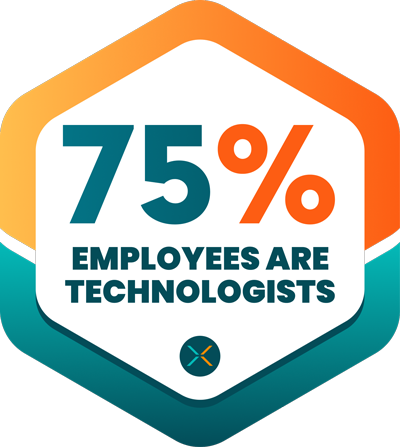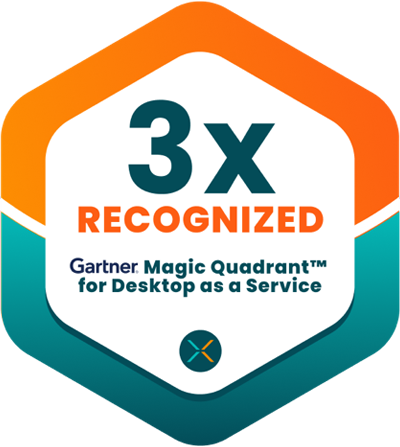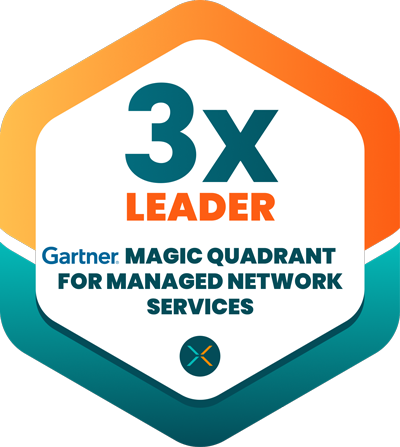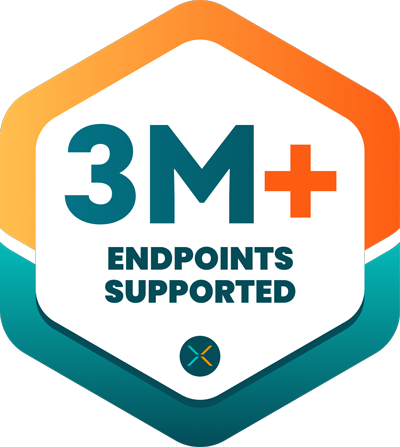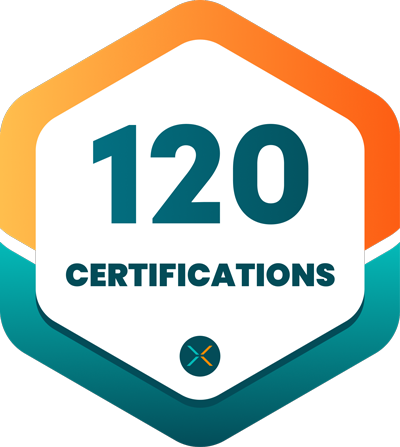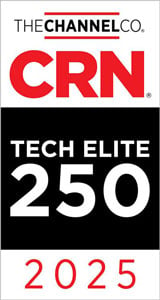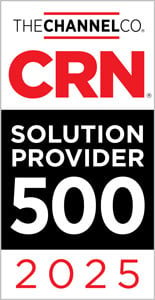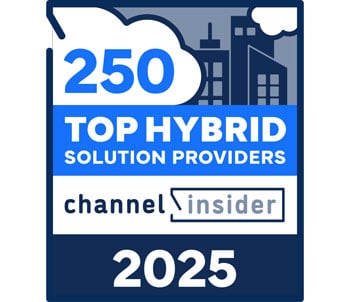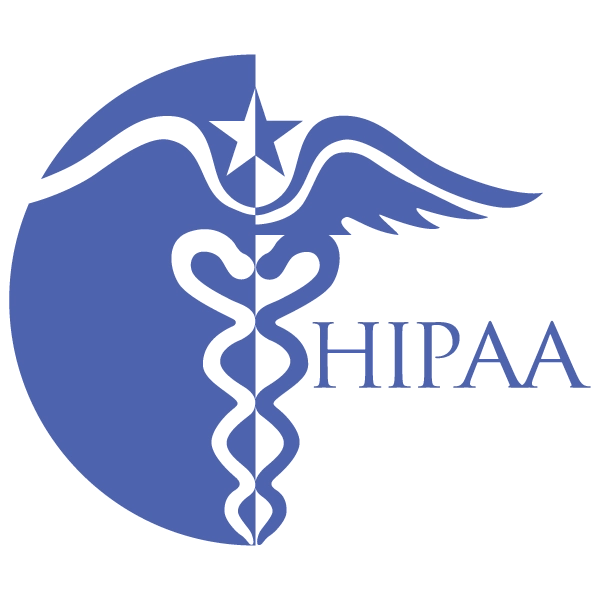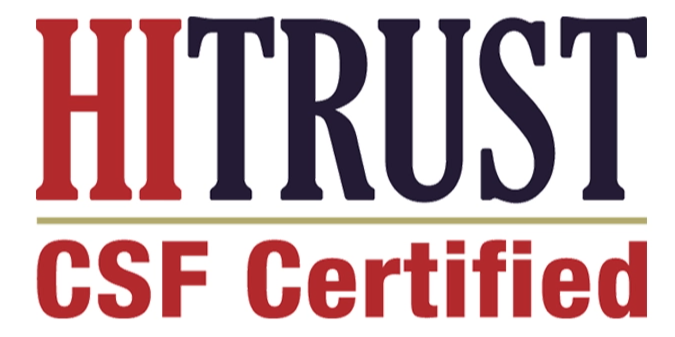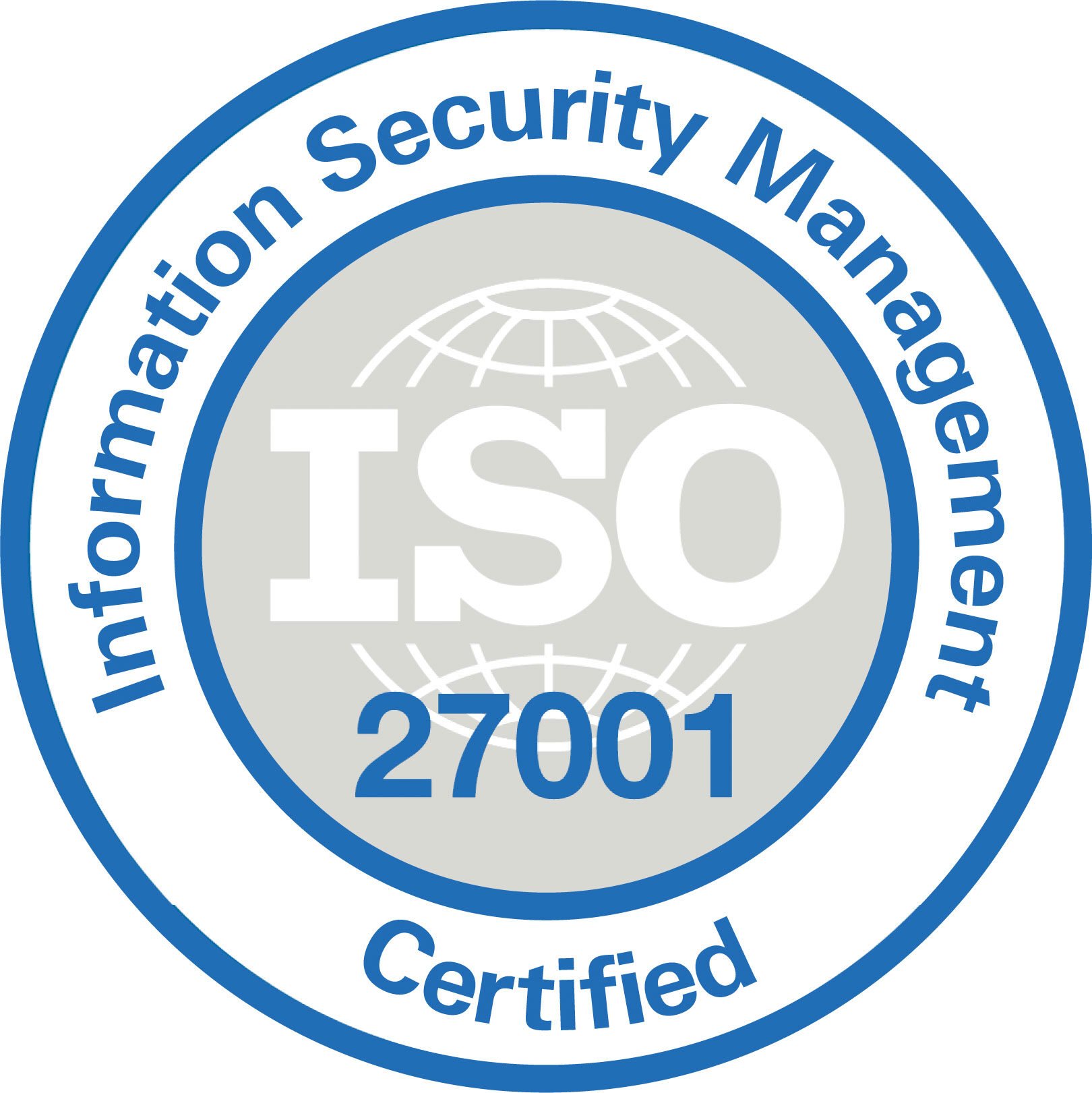Gartner® Critical Capabilities for Desktop as a Service

Overview
Desktop as a service provides secure remote access to corporate applications and data, from any location, using any device. This research helps end-user services leaders assess DaaS solutions, based on four use cases and 15 critical capabilities.
Key Findings
- Interest in desktop as a service (DaaS) is growing, and the market's 2024-2028 compound annual growth rate is around 9%, whereas growth in the on-premises virtual desktop infrastructure market has been nearly flat.
- DaaS costs, especially for complex workloads, are a significant pain point for clients as their pay-per-use consumption costs can vary dramatically.
- DaaS removes some of the operational complexity of virtual desktops; however, it also introduces other factors (e.g., variable costs, lack of configuration flexibility and network complexity).
Recommendations
End-user services (EUS) leaders responsible for evaluating DaaS solutions should:
- Ensure the effectiveness of DaaS by segmenting employees by the use cases suggested in this research and selecting a vendor that best aligns with the use cases that are most relevant for your organization.
- Optimize costs by assessing vendor capabilities that allow for the rightsizing of virtual machines (VMs), which optimizes user density and tunes power management. Consider additional tools to provide ongoing cost optimization and automation.
- Transform operations and minimize labor by selecting a DaaS vendor that offers the optimal services for your requirements, which can vary from self-assembled to a fully managed DaaS offering.
Self-Assembled
You perform virtual desktop infrastructure (VDI) operations and manage virtual desktops.
Vendor-Assembled
You manage the virtual desktops, but the vendor is responsible for delivery.
Vendor-Managed
Offerings where the vendor manages the majority of experiences.
Half of the DaaS vendors in this research were originally VDI software vendors, and several of them still support on-premises VDI deployments.
EUS and digital workplace leaders should use this research to understand the key use cases and capabilities of DaaS offerings. They should evaluate each vendor's offering based on its ability to meet their organization's needs. They should also assess each vendor's product roadmap to ensure alignment with their long-term business strategy and goals (see the companion Magic Quadrant for Desktop as a Service).
Critical Capabilities research differs from Magic Quadrant research by focusing less on overall vendor positioning in a specific market. Instead, it emphasizes how tools align with and support an enterprise's top priorities, requirements and use cases. Gartner recommends that you use the interactive version of this research to change the weightings to reflect your unique needs. Our analysis synthesizes vendor-provided product information, demonstrable and broadly available functionality as of 31 March 2024, and feedback gathered from Gartner client interactions during the past 12 months.
Analysis Critical Capabilities
Use-Case Graphics

Vendor Strengths and Cautions
Alibaba Cloud
Alibaba's DaaS capability, Elastic Desktop Service (EDS), is a vendor-hosted and vendormanaged cloud control plane with a persistent dedicated desktop or shared pool desktop, using proprietary technology available only in the Alibaba cloud. The pricing strategy is based on compute, storage and network, as well as the specific duration of user usage. Prepaid and pay-as-you-go options are available.
EDS can provide large-scale, redundant solutions with disaster recovery (DR) failover capability at a relatively low cost for deployments inside China. Besides offering Windows virtual desktops, it also has one of the largest Linux virtual desktop deployments, which is popular with developers. EDS offers persistent desktops, pooled desktops and application streaming across Windows client and Windows Server.
Alibaba is defined as one of the "listed providers" under Microsoft's product terms, which means that using Windows 10 or 11 with Alibaba requires the purchase of a Windows Virtual Desktop Access license and dedicated hardware. Windows Server 2019 is the primary OS leveraged on Alibaba, which limits its capabilities to support Microsoft Office on server OSs - support for Server 2019 will end in October 2025, and support for Server 2022 will end in October 2026. However, most existing deployments in China and southeast Asia do not use Microsoft Office. EDS does not offer optimizations for more common enterprise tools such as Microsoft Teams and lntune, as well as lmprivata. It focuses on Chinese vendors for integrations and offers limited functionality outside of China, which lowers its rating. Clients should plan for regional variations in costs.
Alibaba DaaS is ideal for customers that need to deploy a large-scale solution inside China and nearby countries aligned with China, with moderate options for customization. Customers should also have the skills to understand the design choices and required operational activities.
Capabilities Summary
Alibaba Cloud's highest-rated capabilities are for endpoints and compliance. It offers a broad range of support for endpoints, as well as its own endpoint hardware. For compliance, its offering supports a range of global and regional standards. Its lowest Critical Capability is multicloud and hybrid, as its offering is solely integrated and available within Alibaba Cloud.
Use Cases Summary
Alibaba Cloud scored in the bottom third of vendors across all use cases. Alibaba Cloud's highest-scored use cases are high security/compliance and high performance, driven by its capabilities for compliance, advanced networking, rich graphics and VM options. Its lowest-scored use case is remote workers, driven by its capabilities for integration and multicloud and hybrid.
Amazon Web Services
Amazon Web Services' (AWS') DaaS capability includes a hosted and managed cloud control plane with the following offerings: Amazon Workspaces, Amazon Workspaces Core, Amazon Workspaces Secure Browser, Amazon Workspaces Pools and the related Amazon AppStream 2.0. Amazon WorkSpaces is primarily a dedicated desktop solution, but has recently introduced single-session nonpersistent desktops with Workspaces Pools. Amazon WorkSpaces Core allows vendors such as Citrix, Omnissa and Workspot, as well as customers, to integrate their own solutions in an infrastructure-as-a-service (laaS) manner. Amazon provides self-assembled models with Workspaces Core and vendor-assembled models with WorkSpaces.
Variations in functionality and available options with the AWS DaaS offerings still cause confusion for customers. Amazon WorkSpaces uses a completely different administration and user interface for desktop virtualization, compared to AppStream 2.0. Additionally, AppStream 2.0 offers features not available in WorkSpaces, including multisession nonpersistent desktops and application virtualization. AppStream 2.0 is not included in the Microsoft 365 licensing changes that allow Microsoft 365 applications to be installed within Amazon Workspaces virtual desktops.
AWS is ideal for customers that need to deploy large-scale solutions globally, have other dependent workloads deployed in the AWS cloud or require Linux desktops. With high levels of customization available, AWS DaaS is best suited to organizations with the capabilities to understand the design choices and required operational activities.
Capabilities Summary
Amazon's highest-rated capabilities are business continuity, global support operations and security operations. Its Critical Capabilities ratings grew significantly year over year compared to other vendors, due to new functionalities such as Amazon Workspaces Pools and a new Workspaces thin client. However, available features still trail many other DaaS vendors. For example, Amazon WorkSpaces still lacks the ability to offer lower-cost, multiple-users-per-session options, in which multiple users connect to the same VM. Compared to most thin clients, Amazon's offering starts around $200 to purchase, plus a $6 monthly service fee per device. Its lowest-rated capabilities are rich graphics, multicloud and hybrid, and peripheral support.
Use Cases Summary
Amazon scored in the middle third of vendors across all four use cases. Its highest-scored use case is high security and compliance, driven by its capabilities for global support operations and compliance. Its lowest scored use case is remote workers, due to its capabilities for peripheral support and multicloud and hybrid.Anunta
Anunta's DaaS capability consists of two offerings: Enterprise DaaS and Packaged DaaS
(formerly called DesktopReady). Enterprise DaaS is a fully vendor-managed solution aimed at larger organizations with complex requirements. Packaged DaaS is a standardized, vendor-assembled solution focused on meeting the needs of small to midmarket clients and managed service providers (MSPs).
For Enterprise DaaS, Anunta works closely with customers to gather requirements and recommend the best offering to fit user needs. Then, Anunta designs, implements and supports that solution. This can lead to longer deployment times and limit agility, because changes after initial deployment are usually implemented as a new project. For Anunta Packaged DaaS, there is less customization and shorter deployment times.
Both Anunta offerings leverage OEM DaaS platforms (e.g., AWS, Citrix, Microsoft, Omnissa), which could influence Anunta's pricing and terms, and challenge its ability to deliver its product roadmap.
Anunta DaaS is ideal for customers with limited VDI skills, and complex requirements and use cases, including hybrid locations, such as on-premises, private cloud and various public clouds.
Capabilities Summary
Anunta's highest-rated capabilities are for rich graphics and peripheral support, which stems from its leveraging of other DaaS platforms. It offers additional functionality through add-ons with its DesktopReady management platform (onboarding and provisioning), CloudOptimal (cloud cost control) and EuVantage (improved monitoring). It rates lowest for virtual machine options, business continuity and configurability.Use Cases Summary
Anunta scored in the bottom third of vendors across all use cases. Its highest-scored use case is the high performance use case, driven by its capability for rich graphics. Its lowestscored use case is the custom, enterprise architectures use case, driven by its capability for integration.
Apporto
Apporto offers a fully vendor-managed, proprietary DaaS capability, administered via a Saas cloud control plane.
Apporto is particularly focused on the needs of higher education, and its offering includes integrations with education-centric learning management systems (LMSs) like Blackboard and Moodie. Its solution connects users to the nearest data center for optimal network performance in a multisite configuration. It also offers functionalities that include autoscaling, backups, failover, OS imaging and app deployment. Apporto's offering is configurable, allowing customers and MSPs to select the optimal level of control or service.
Clients should work with Apporto when planning DaaS deployments, as new points of presence (POPs) for accessing Apporto may be required. Although this is managed by Apporto, it may not always be practical for some centralized applications, because the back-end application dependency may not be located near the offering's virtual desktops. Apporto offers only base functionality, compared to other vendors.
Apporto is ideal for customers without VDI skills, with virtual labs, decentralized applications, low-cost endpoints, and users with low network latency to the virtual desktop site.
Capabilities Summary
Apporto rates highest in virtual machine options, cost optimization and management services. It offers a broad range of virtual-desktop options. For cost optimization, it has aggressive pricing, which is appealing to cost-conscious customers such as highereducation organizations. For management services, it offers virtual classrooms and the ability to manage applications within the virtual desktop. Its lowest rated capabilities are endpoints, advanced networking, real-time audio/video optimization and cost optimization.
Use Cases Summary
Apporto's use-case scores were in the bottom third of vendors. Apporto's highest-scored use case is custom, enterprise architectures, driven by its capabilities for virtual machine options. Its lowest scored use case is high performance, driven by its capabilities for realtime audio/video optimization.
XTIUM, Formerly ATSG
XTIUM, Formerly ATSG's DaaS provides a full vendor-managed solution built on top of the Citrix platform, with enhancements that include automation, streamlined management and advanced network connectivity.
XTIUM, Formerly ATSG's offering includes OS imaging, application life cycle support, and endpoint detection and response for VMs, as well as network firewall services, identity and access management (1AM), digital experience monitoring (DEM), and various integrations, such as ServiceNow and remote monitoring and management tools. It supports solutions that reside in the public cloud, on-premises or in the private cloud, using Equinix data centers for customers that need high-performance networking capabilities. Because its offering is built on Citrix, it offers a significant number of virtual desktop capabilities. But its dependency on Citrix could impact future XTIUM, Formerly ATSG pricing, and any significant changes in Citrix strategy could challenge its ability to deliver its product roadmap. XTIUM, Formerly ATSG is primarily focused on North America locations, but is able to provide 24/7 support globally. XTIUM, Formerly ATSG has a wide variety of services, so its DaaS may not have the same sharp focus as other vendors that are solely DaaS providers.
XTIUM, Formerly ATSG is ideal for customers that have Citrix but no longer wish to manage it, are not ready for the public cloud, require a hybrid, multisite architecture with extensive customization, or wish to exit their data centers.
Capabilities Summary
ATSG's highest-rated capabilities include advanced networking, real-time audio/video optimization and management services. For advanced networking and management services, it offers managed network, security and operations services. Its lowest-rated capabilities are compliance, as well as multicloud and hybrid.
Use Cases Summary
ATSG's use-case scores were in the top third of vendors. Its highest-scored use cases are high security/compliance and high performance, driven by its capabilities for advanced networking and management services. Its lowest-scored use case is custom, enterprise architectures, driven by its capability for multicloud and hybrid.
Citrix
Citrix's DaaS capability includes a wide variety of features based on its own proprietary technology. It includes hybrid capabilities to support workloads in public cloud offerings with Azure Virtual Desktop, Windows 365, Amazon WorkSpaces, Google laaS and various on-premises hypervisors, including its own offering, XenServer. Gartner considers Citrix offerings to be primarily self-assembled, but Citrix does offer a vendor-assembled model.
Citrix has the broadest set of features and is strong across all use cases because of additional features. These include advanced analytics and data collection, session recording, adaptive authentication, and secure private access with an embedded enterprise browser. Citrix adjusted its strategy to refocus on maintaining feature parity between both cloud and on-premises workloads, and to combine licenses for NetScaler software features into its new Citrix Universal Hybrid Multi-Cloud and Citrix Platform licensing. Citrix provides the option to host local gateways, storefronts and provisioning servers for a hybrid solution accessible from anywhere, but that adds complexity and requires self-assembly.
Citrix is ideal for customers with large-scale, complex requirements that span on-premises, public and private clouds, graphic-intensive workloads, and globally distributed users, and it requires skilled staff to manage the environment.
Capabilities Summary
Citrix's highest-rated capabilities are rich graphics, peripheral support, advanced networking and real-time audio/video optimization. It ranks high in 10 of the 15 critical capabilities, with its integrated NetScaler application delivery controllers, highly optimized protocol and broad set of unified communication optimizations. Citrix's lowest-rated capability is management services.
Use Cases Summary
Citrix lands strongly in the top third and performs best in the high performance use case. However, its lowest-scored use case is custom, enterprise architectures, driven by its capability for management services.
Dizzion
Dizzion offers self-assembled (Dizzion Flex), vendor-managed (Dizzion Managed), and vendor-managed and hosted (Dizzion Complete) DaaS offerings. It also offers workload compliance services (Dizzion +Compliance) that include hybrid solutions involving private cloud and public cloud options, with a centralized cloud control plane that can support a wide variety of workloads in many different locations. Its offerings are based on its own proprietary DaaS architecture and can also operate on Omnissa Horizon. Last year, Dizzion acquired the Frame platform, which provides a proprietary technology for DaaS, reducing Dizzion's dependence on Omnissa Horizon. Dizzion provides options for high availability, replication, DR and a variety of integrations, such as 10ZiG, Avaya, AWS, ControlUp, Five9, Google Chrome Enterprise, Google Cloud Platform (GCP), IBM Cloud, IGEL, Liquidware, Microsoft Azure, Nutanix, Stratodesk and Unicon.
Capabilities Summary
Dizzion's highest-rated capability is in advanced networking, real-time audio/video optimization and management services. It has a wide range of offerings with its Frame technology and Omnissa Horizon deployments. The Frame technology has gaps compared to the Horizon feature set, which includes advanced features like application layering. Its lowest-rated capabilities are global support operations and endpoints.
Use Cases Summary
Dizzion's use-case scores were in the top third of vendors across all use cases. It scores highest in the high performance use case, driven by its capabilities for advanced networking, rich graphics and virtual machine options. Its lowest-scored use case is custom, enterprise architectures, driven by its capability for global support operations.
Flexxible
Flexxible DaaS is a fully vendor-managed offering built on top of other DaaS platforms
(e.g., Citrix, Microsoft, Omnissa and Parallels).
Flexxible provides aggregated management of disparate platforms and automation. It integrates with UEM tools and ServiceNow workflows. The offering is primarily privatecloud-hosted, with full redundancy, active/active, backup, DR and self-service provisioning options. The company works closely with customers or partners to gather their requirements and recommend the best offering to fit the users' needs before implementation. It can provide direct support or work through an MSP or systems integrator (SI) partner, but this can lead to longer deployment times and limit agility, as changes after initial deployment are usually implemented in a new project. Typically, Flexxible provides support for services such as OS image management, automation and related VDI tools, but stops short of supporting customer applications.
Flexxible has a solid combination of leveraging features for other DaaS platforms and using its own set of add-on features. While Flexxible previously focused only on DaaS, it is now also focusing on digital employee experience (DEX), which might concern customers looking to deploy Flexxible's solution, as potential new DEX features may take priority.
Flexxible is ideal for large customers or MSPs that want to increase automation, and those that have complex requirements, custom use cases, existing VDI implementations or hybrid locations (e.g., on-premises, private cloud, public cloud). Its solution allows customers and MSPs to more easily migrate between desktop virtualization offerings, such as Citrix, Microsoft and Omnissa, because most of the virtual desktop management can be done in the console.
Capabilities Summary
Flexxible's highest-rated capabilities are multicloud and hybrid, and cost optimization. Its support of multiple DaaS offerings contributes to its multicloud and hybrid capability. Its lowest-rated capabilities are compliance and management services.
Use Cases Summary
Flexxible's use-case scores were in the middle third of vendors for all use cases. Its highest-scored use cases are high security/compliance and high performance, driven by its capabilities for rich graphics and virtual machine options. Its lowest-scored use case is custom, enterprise architectures, driven by its capability for management services.
lronOrbit
lronOrbit offers a fully vendor-managed offering called INFINITY Workspaces that runs on top of Omnissa Horizon or Microsoft Remote Desktop Services.
INFINITY Workspaces is primarily private-cloud-hosted. Its streamlined packages and enterprise-class data center design features redundancy, backup and DR options. It specializes in graphics-intensive workloads and offers a control plane platform named 10 Central Resource Center (IOCentral). This enables customers to manage and control IT assets that can manage virtual desktops, local and multicloud resources, and OS settings and policies, as well as optimize performance.
lronOrbit consistently ranked in the middle third for all use cases due to a below-average feature set with limited differentiation, because of dependencies on other platforms. However, the private-cloud deployment would appeal to customers concerned with possible security issues and limited control with the public cloud. lronOrbit is aligned for customers, especially in North America, with graphics-intensive workloads with virtual GPUs (vGPUs) or high-security requirements, few VDI skills, and the inability to move to the public cloud for security or proximity reasons.
Capabilities Summary
lronOrbit's highest-rated capabilities are endpoints, real-time audio/video optimization and compliance. It offers a broad range of support for endpoints. For compliance, its offering supports a range of compliance and security standards. Its lowest rated capability is global support operations, as it is mostly focused on North America.
Use Cases Summary
lronOrbit's highest-scored use cases are high security/compliance and high performance, driven by its capabilities for compliance, rich graphics and advanced networking. Its lowest-scored use case is custom, enterprise architectures, driven by its capability for global support operations.
Microsoft
Microsoft's DaaS capability has two main offerings, which are Azure Virtual Desktop (AVD) and Windows 365. AVD has options for customization that require specific skills to understand design decisions and support some operational activities, which Gartner classifies as self-assembled. AVD supports Windows 10/11 multisession, which is a popular and highly leveraged feature that allows multiple users on a shared Windows 10/11 VM. For most DaaS solutions, the only multisession option available is Windows Server.
Windows 365 is a simpler, standardized solution with automation and self-service offered as a vendor-assembled model. Windows 365 has some Cloud PC variations that cater to specific use cases, such as shift workers and developers. Integration for both offerings is optimal, as Microsoft controls the life cycle for Windows, Microsoft Cloud, the AVD platform, Microsoft lntune and the Microsoft 365 productivity suite.
Microsoft consistently ranked highly across all use cases. Additionally, the majority of its large-scale AVD deployments utilize additional software, such as a DaaS optimization tool or another listed vendor. Many Gartner clients report using additional vendors to enhance AVD operations and user experience for features like application layering, enterprise policies, advanced analytics, provisioning and managing deployments at scale, and cost optimization. Vendors utilized to perform these tasks include Citrix, Hydra, Nerdio, Omnissa and Parallels.
VD and Windows 365 are limited to the Microsoft cloud. AVD provides an on-premises extension to support internal hosting on Azure Stack HCI, which exited preview earlier in 2024. However, AVD on Azure Stack HCI has fewer features, such as a lack of support for Entra ID, a limit of 16 nodes per cluster and support only for single-room deployments (i.e., no support for stretch clustering). The overall cost per user is typically more expensive than hosting workloads directly in Azure, and the control plane still resides in Azure.
AVD is ideal for customers with a wide variety of customization needs, whereas Windows 365 is a better fit for customers that want a simplified and standardized solution requiring minimal effort to support. Both Microsoft offerings are best suited for mostly cloud-based DaaS environments, with core virtual desktop capabilities.
Capabilities Summary
Microsoft's highest-rated capabilities are compliance, security operations, endpoints and global support operations. Microsoft has high security standards, with U.S. Department of Defense (DoD) Impact Level 6 (IL6) accreditation. Its lowest-rated capability is multicloud and hybrid, as it only supports offerings within Azure and its on-premises extension, Azure Stack HCI.
Use Cases Summary
Microsoft consistently scored in the top third of listed vendors across all use cases. Its highest-scored use case is high security and compliance, driven by its capabilities for compliance and security operations. Its lowest-scored use case is remote workers, driven by its capability for multicloud and hybrid.
Omnissa
Omnissa Horizon Cloud Service offers a universal cloud control plane that supports workloads on the public cloud, private cloud or on-premises. Horizon architecture is built on a proprietary stack that integrates well with VMware products.
Omnissa Horizon Cloud Service has cloud-native options and is not dependent on VMware technology. Omnissa provides automation and uses Kubernetes containers to deploy and scale its edge solution, including a local gateway and cloud connector appliance. The Horizon offerings range from self-assembled to vendor-managed.
Omnissa Horizon consistently performs well in the DaaS market, but its score is slightly lower because of its fragmented cloud management support. Its universal control plane supports capacity providers on bare-metal pods, native Azure, and Amazon WorkSpaces Core. But it does not support automated pools with Azure Virtual Desktop or Amazon EC2. In addition, instant clones are not available with its cloud-native solutions, due to dependencies on the vSphere hypervisor. Its PC over IP (PColP) support is being deprecated in favor of Blast Extreme. Going forward, PColP will only be supported with additional third-party software. The next-generation cloud control plane is a positive direction for Omnissa, but lacks full integration with cloud providers, namely Azure Virtual Desktop.
Omnissa Horizon is ideal for customers that have large-scale, custom, demanding, graphics-intensive workloads, and that are deeply invested in the VMware ecosystem, with globally distributed users and skilled staff to manage the environment.
Capabilities Summary
Omnissa's highest-rated capabilities are business continuity and integration, and ranks highly in both. For integration, it offers support for third-party tools through its UEM and DEX solutions as part of its Omnissa Workspace ONE offerings. Its lower-rated capabilities are cost optimization, advanced networking and compliance.
Use Cases Summary
Omnissa's highest-rated capabilities are business continuity and integration, and ranks highly in both. For integration, it offers support for third-party tools through its UEM and DEX solutions as part of its Omnissa Workspace ONE offerings. Its lower-rated capabilities are cost optimization, advanced networking and compliance.
oneclick
oneclick is a platform service that is hosted via a highly available and scalable composite of Kubernetes clusters that are globally redundant and public-cloud-agnostic. oneclick uses the Kubernetes clusters to manage its DaaS environment; the virtual desktops are virtual machines, not Kubernetes-based. oneclick is primarily a self-assembled DaaS model, as it requires skills and effort to design and maintain.
oneclick's limited capabilities would suit organizations looking for only core features; this includes cloud solution providers, managed service providers and some enterprise clients. oneclick offers only a browser client based on a remote desktop protocol, (RDP) or virtual network computing (VNC) protocols that can significantly impact user experience (UX) at higher network latencies. oneclick recommends single- or double-digit network latency for optimal UX, which is relatively stringent.
oneclick is ideal for telecom providers or Sis that need a customizable platform, and that have VDI skills and users that are located near the virtual desktops, for the lowest latency possible.
Capabilities Summary
oneclick's highest-rated capabilities are multicloud and hybrid, and business continuity. Its offering can aggregate public cloud, private cloud and on-premises resources in one console. oneclick's offering has solid infrastructure networking connectivity and often sells through telecom partners. It also integrates with Acronis to provide backup and DR options for persistent desktops in multiple sites. Its lowest-rated capabilities are security operations, cost optimization and configuration, as its solution is limited.
Use Cases Summary
oneclick scored in the bottom third across all vendors for all use cases. Its highest-scored use case is custom, enterprise architecture. Its lowest-scored use case is high security and compliance, driven by its capability for compliance.
Parallels
Parallels adapted its on-premises VDI solution to support DaaS and built a new DaaS solution for small and midsize enterprises. The newer solution released in early 2024, Parallels DaaS, offers a fully managed control plane and is a vendor-assembled DaaS model that runs on Microsoft Azure. Its self-assembled DaaS solution, Parallels Remote Application Server (RAS), is primarily an on-premises solution with a management control plane running on-premises, even though it allows access to DaaS solutions like Azure Virtual Desktop and Amazon EC2.
Parallels has intermediate ranks for all use cases, partly because it is a new offering and still building out its DaaS features. As Parallels continues to expand on DaaS partnerships, especially with Microsoft and Amazon, we expect their offering to mature, but the onpremises dependencies of their Parallels RAS solution for management of these cloud providers may limit adoption. Parallels does offer significant support for on-premises workloads, including Microsoft Hyper-V, Nutanix, Scale Computing and VMware.
Parallels is ideal for customers looking to reduce and simplify their on-premises virtual desktop footprint while expanding to Azure laaS or Azure Virtual Desktop. While not offering the latest new and innovative features, Parallels offers the core features that DaaS customers require, including the ability to support on-premises and cloud-based virtual desktop workloads.
Capabilities Summary
Parallels' highest-rated capabilities are management services, real-time audio/video optimization and peripheral support. These capabilities are leveraged from their long lived on-premises VDI offering and experience. Its lowest-scored capabilities are business continuity, cost optimization and advanced networking.
Use Cases Summary
Parallels scored in the middle third of vendors across all use cases. Its highest scored use cases are remote workers and high performance, driven by its capabilities for management services and virtual machine options. Its lowest-scored use case is custom, enterprise architectures, driven by its capability for global support operations.
Workspot
Workspot is a proprietary DaaS offering with a central cloud control plane that can deploy and operate DaaS in Azure, Amazon EC2, Amazon WorkSpaces Core, GCP laaS and onpremises private clouds. Its solution has vGPU options, strong redundancy, ransomware recovery options and includes a network operations center (NOC) with real-time incident observability. It integrates with various tools, including Splunk, ServiceNow and NetApp.
Workspot uses the RDP protocol and recommends a low-latency configuration for optimal UX. One way it optimizes the latency is via public cloud data centers and closest POP routing, which benefits high-performance use cases, such as rich graphics. However, this method is not available for customers who use applications with a central dependency.
Workspot is ideal for customers with minimal VDI skills, globally dispersed users, multicloud needs, rich-graphics workloads, high business continuity (BC) requirements and a need for ransomware recovery options.
Capabilities Summary
Workspot's highest-rated capabilities are rich graphics, business continuity, and multicloud and hybrid. For multicloud and hybrid, it supports a broad range of public cloud offerings for Azure, AWS and GCP. Its lowest-rated capabilities are integration, peripheral support and configurability.
Use Cases Summary
Workspot ranked within the bottom third of vendors across all use cases. Its highestscored use cases are remote workers and high performance, driven by its capabilities for compliance, advanced networking, rich graphics and virtual machine options. Its lowestscored use case is high security and compliance, driven by its capability for integration.
There are two main types of buyers of DaaS:
- Small to midsize enterprises with few to no virtual desktop skills that want a simple and quick solution for a relatively small number of users.
- Larger organizations with virtual desktop skills that have complex requirements and a need for customization, often with a larger number of users.
Small and midsize businesses tend to focus on vendor-assembled DaaS and willingly accept the standardized offering in exchange for a simplified and semiautomated solution. Larger organizations tend to use self-assembled DaaS, because they have the skills necessary to use them and require more customization. A full vendor-managed DaaS offering can be consumed by either. Selecting an optimal offering requires a close examination of the use cases that drive the need for desktop virtualization. The use cases in this research are the ones most commonly observed by our analysts and are very diverse, which helps showcase the differentiation of the vendors' offerings.
Market Definition
Gartner defines desktop as a service (DaaS) as the provision of virtual desktops by public cloud or other service providers. DaaS provides desktop or application end-user experiences from virtual machines (VMs) accessed using a remote display protocol. DaaS vendors incorporate a fully managed control plane service into their offerings, which facilitates user connections and provides a management interface. DaaS can be delivered preconfigured as a service. Alternatively, it can be delivered as a platform, in which case the client is responsible for assembly, configuration and management. DaaS is charged for using subscription- or usage-based payment structures.
DaaS solutions allow remote workers, offshore workers, third-party employees, contractors, home workers and office workers to access virtual desktops hosted in the cloud. DaaS solutions include technology that enables centralized management of all VMs. DaaS virtual desktops can be configured for a variety of use cases associated with contact center workers, process workers, information workers, and workers who require highperformance computing or rich graphics.
Must-Have Capabilities
Standard Capabilities
Optional Capabilities
Must-Have Capabilities
Must-have capabilities in this market include:
- A cloud control plane, from where DaaS operations are performed, that is managed and maintained by the vendor that brokers connections to VMs hosted by a public cloud or other service provider.
- A remote desktop protocol that provides secure access to virtual desktops or applications.
- Support for the ability to connect from a range of endpoints, including those running Windows, macOS, Linux, iOS, Android, Chrome OS, thin clients and common browsers.
- A tool to manage virtual desktop resources, users and assignments.
Standard Capabilities
Standard capabilities in this market include:
- The ability to orchestrate persistent and nonpersistent compute and storage resources for Windows 10/11 desktop experiences, or for similar experiences on a Windows Server OS running single-session or multisession VMs.
- Image management technology to allow central updating or management of VMs.
Optional Capabilities
Optional capabilities in this market include:
- Vendor-provided compute and storage resources.
- Application-hosting capabilities (published app).
- Monitoring of virtual desktop and application usage, user experience and performance.
- User profile management and application layering and masking.
- Support for GPU workloads.
- Integration or extension of the client's network into the DaaS environment.
- Multicloud and hybrid deployment options.
- IT service management (ITSM) tool and configuration management database (CMDB) integration.
- Digital employee experience (DEX) or digital experience monitoring (DEM) tool integration.
Product/Service Class Definition
Desktop as a service offerings are used to manage and deliver virtual desktops and applications from the cloud to employees, contractors and third-party users. This differs from VDI solutions, which are on-premises and require the organization to install and maintain the VDI infrastructure software. However, many traditional VDI vendors have added cloud management capabilities to enable their offerings to work with both onpremises and cloud-based virtual desktop workloads.
Self-assembled DaaS is the most popular DaaS option for organizations looking to migrate some or all of their on-premises VDI workloads to DaaS. These solutions provide the most flexibility and the most attractive price points, but require virtual desktop expertise. Cost and workload optimizations are key for these solutions, as monthly costs can vary significantly between an optimized and nonoptimized deployment.
Vendor-assembled DaaS solutions are appealing to organizations that have virtual desktop use cases, but lack expertise. While usually more expensive than self-assembled DaaS solutions, these solutions can typically be managed with traditional UEM tools. These solutions sometimes originate outside of IT, with line-of-business units that want to offer bring your own PC (BYOPC).
Vendor-managed DaaS solutions align with organizations that typically outsource their endpoint management. These solutions are more flexible than a traditional outsourcer, but are typically the most expensive DaaS solutions. Most of the vendors offering these solutions are smaller, as the market leaders tend to focus on self-assembled and vendorassembled solutions.
Critical Capabilities Definition
Advanced Networking
An advanced protocol with dynamic compression, session reliability, traffic prioritization, adaptive transport and software-defined WAN (SD-WAN) integration.
Business Continuity
Inclusion of DR options (failover without user intervention, image replication, global server load balancing [GSLB], availability zones) and historical backup functions of unique data in the event of data loss or ransomware attack.
Compliance
Achievement of industry-recognized certifications (e.g., SOC 2, HiTrust, PCI, HIPAA and Fed RAMP). Cost Optimization Ability to provide configurations or automation capabilities that result in cost reductions, in such areas as power management, multisession, storage efficiencies and license optimization.
Custom Configurations
The degree to which the platform provides the option to customize noncore elements of its standard DaaS offering.
Customizations include the ability to use different VM types (single-session, multisession, published applications), persistent versus nonpersistent VMs, different client options (browser-only or full client), network connectivity options, and multicloud support across public and private clouds. This also includes the ability for an organization to use its organizational branding, messaging, style and so on to customize the user experience by utilizing provided APls, style sheets, direct console configurations and the like.
Endpoints
The ability to support different OSs on the endpoint, including Windows, macOS, ChromeOS, Linux, thin client, iOS, iPadOS and Android, with a native agent/feature set that is not limited to access from within a browser.
Global Support Operations
Ability to provide 24/7 support, with staff located in the same global region as customers and employees who are native speakers, as well as hosting locations that provide regional sovereignty.
Integration
Integration with UEM tools to provide automation for provisioning, updating and upgrading, as well as monitoring tools, such as DEM or DEX tools, and workflow integrations with service management tools.
Also includes integration with endpoint protection platforms (EPPs) and endpoint detection and response (EDR) tools inside the VM.
Management Services
Provision of additional management options beyond the DaaS control plane, such as help desk, image management, application layering, profile management, Al/ML optimizations, OS and third-party patching, break fix, capacity and performance reporting, and network diagnostics.
Multicloud and Hybrid
A single control plane that brokers connections to workload VMs in multiple sites/clouds (public clouds, such as Azure, AWS, GCP and IBM; private clouds; and on-premises data centers in many regions).
These geographic areas include the Americas; Europe, the Middle East and Africa (EMEA); and the Asia/Pacific (APAC) region.
Peripheral Support
Support for peripherals that connect to physical endpoints (e.g., direct printers, USB devices, common access cards [CACs] and smart cards, proximity cards, point-of-sale [POS] devices, bar code scanners, 3D mice, signature pads, and USB composite devices, including USB hubs).
Real-Time Audio/Video Optimization
Provision of video and audio optimization that offloads the rendering from the VM to the physical endpoint, and avoids hairpin network flow - e.g., unified communications as a service (UCaaS), Teams, Webex, Zoom and URL redirection.
Rich Graphics
The ability to support graphics-intensive applications or use cases, support multiple GPU vendors and provide options for sharing GPUs between many users, or dedicate them to one user. This includes supporting high resolutions, including 4K across multiple monitors.
Security Operations
Capability for role-based access control (RBAC) for administrators, single sign-on (SSO), multiple multifactor authentication (MFA) vendors/solutions, and endpoint security and data flow management (anti-keylogging, clipboard, screen scrape protection, passthrough storage, session recording). Security operations for DaaS may also include the services the vendor offers that enhance security (for example, vulnerability assessments, active management of threats, a SOC).
Virtual Machine Options
The ability to support various OSs running inside a VM, such as Windows Desktop OS, Windows Server OS and Linux, as well as the provision of different compute styles (e.g., persistent, nonpersistent and published application).
Use Cases
Remote Workers
Employees or contractors that work outside of an organization site, network or geography, but need to access corporate resources in a secure manner.
The most important capabilities, in priority order, include: real time audio/video optimization, cost optimization and security operations.
High Security and Compliance
Customers with high security requirements, such as government, military, defense contractors and financial traders.
The most important capabilities, in priority order, include: security operations, endpoints, integration and advanced networking.
High Performance
Users or applications that require large amounts of CPU, memory or GPU (e.g., computeraided design, 3D modeling, video editing, GIS). The most important capabilities, in priority order, include: rich graphics, advanced networking and security operations.
Custom, Enterprise Architectures
Architectures with multiple use cases, many users, custom configurations for in-house applications and complex authentication, distributed over many global sites and clouds.
The most important capabilities, in priority order, are multicloud and hybrid, business continuity, and custom configurations.
Vendors Added & Dropped
Added
- Parallels: Parallels is the only new vendor because its new and recently expanded offering, Parallels DaaS, qualified it for inclusion.
- Omnissa: Omnissa has been added as a result of Broadcom's purchase of VMware in 2023, and KKR's subsequent purchase of the renamed Omnissa (previously VMware End-User Computing) from Broadcom.
Dropped
- Frame Platform: Frame was dropped from this year's Critical Capabilities because it was acquired and merged into another listed vendor, Dizzion. Frame has unique IP that Dizzion has decided to focus on, and reduce focus on Frame's older DaaS solutions built on Omnissa Horizon.
- VMware: Following the acquisition of VMware by Broadcom, the Horizon products assessed in this Critical Capabilities were transferred to a new business called Omnissa. Omnissa was then sold by Broadcom to KKR. Omnissa replaces VMware in this Critical Capabilities.
Inclusion Criteria
To qualify for inclusion in this Critical Capabilities research, DaaS vendors need:
- Market participation: Must sell DaaS that aligns to the market definition.
- Market traction: Must show active market participation during the previous 12 months. The company's DaaS offering must meet the following criteria:
- Has been generally available for at least 12 months.
- Can evidence 250,000 active users of its DaaS offerings in March 2023 and/or can evidence 25,000 active users of high-performance virtual desktops. High performance is defined as single-user, dedicated resources (not multisession) with more than 16GB of RAM per user AND must leverage a dedicated GPU or virtual GPU.
- Customer Interest Indicator: Must rank among the top organizations in the Customer:
- Interest Indicator defined by Gartner for this market. Data inputs used to calculate DaaS customer interest include a balanced set of measures, such as:
- Gartner customer search, inquiry volume and trend data.
- Volume of job listings specifying experience with the DaaS offering as a job requirement on job placement boards (e.g., Linkedln, Indeed) and/or on a range of employment websites in the U.S., Europe, and China.
- Frequency of mentions as a competitor to other DaaS vendors in reviews on Gartner's Peer Insights forum between March 2022 and April 2023.
- Social media presence and engagements.
- Regions: DaaS must be available in at least two regions. The regions considered in this Critical Capabilities research are:
- North America: For the scope of this research, we defined North America as the U.S., Canada and Mexico.
- Europe: For the scope of this research, we defined Europe as the sum of Western and Eastern Europe. Gartner defines Western Europe as including the following countries: Austria, Belgium, Denmark, Finland, France, Germany, Greece, Ireland, Italy, the Netherlands, Norway, Portugal, Spain, Sweden, Switzerland and the U.K. We define Eastern Europe as including the following countries: Albania, Belarus, Bosnia and Herzegovina, Bulgaria, Czech Republic, Croatia, Estonia, Hungary, Latvia, Lithuania, Macedonia, Moldova, Montenegro, Poland, Romania, Russia, Serbia, Slovakia, Slovenia, Turkiye and Ukraine.
- Asia/Pacific: For the scope of this research, we included Greater China (the Chinese mainland, Hong Kong and Taiwan), Mature Asia/Pacific (Australia, New Zealand, Singapore, South Korea and Japan), Emerging Asia/Pacific (India, Indonesia, Malaysia and Thailand), and the Rest of Asia/Pacific (Bangladesh, Pakistan, Philippines, Sri Lanka and Vietnam).
- Latin America: For the scope of this research, we included Brazil, Chile and Argentina.
- Middle East and Africa
- Support services must be available in each of the six regions for coverage during daytime working hours (approximately 8 a.m. to 5 p.m.) in at least one time zone per region.
- Self-assembled DaaS: Self-assembled DaaS services are where the client selects a cloud-based virtualization broker and integrates this with a customer-defined laaS.
- Vendor-assembled DaaS: Vendor-assembled services incorporate a cloud-based virtualization broker integrated with a cloud infrastructure. The vendor is responsible for orchestration of all infrastructure services upon which the virtual desktops operate.
- Vendor-managed DaaS: Vendor-managed DaaS services are where the vendor provides a virtualization platform, a cloud infrastructure and the management of virtual desktops.
- Note: Although Sis provide these offerings, their services are not covered here; they are covered by the Magic Quadrant for Outsourced Digital Workplace Services.
Vendors must include the following services to qualify:
- A managed control plane for the solution as part of the base license or usage fee (or fees)
- Management software (sometimes called the control plane) required to operate the virtual desktop environment.
- Maintenance, updates and upgrades to all cloud infrastructure and management software required to operate the DaaS platform.
- Unique intellectual property (IP) that is critical to DaaS operations and/or UX. A vendor that solely integrates and orchestrates other vendors' platforms or services would not qualify.
- A remote desktop protocol to provide secure access from an external user's device to the DaaS VMs.
- Provide a desktop experience that can include any or all the following:
- A hosted Windows or Linux server OS that allows multiple sessions per server, delivering an individual desktop experience to each user.
- A hosted Windows or Linux server OS that allows a single session per server, delivering a desktop experience to users.
- A hosted Windows or Linux desktop client OS that allows a single session per operating system virtual machine.
- A hosted Windows or Linux desktop client OS that allows multiple sessions per operating system VM, to deliver individual experiences to each user.
- Persistent or nonpersistent VMs that are assigned to an individual or within a pool.
Vendors will not qualify if they only provide these services, though these additional optional services were assessed during the evaluation:
- Hosted Windows or Linux application virtualization, where the application remains on the DaaS infrastructure and is accessed via the remote desktop protocol.
- Hosted macOS services.
- Unified workspaces.
- Local hypervisors.
- Managed services.
- Endpoint security and posture checking, which may optionally include workspace biometric assessments.
- Additional, value-added features from either their own portfolio of products or thirdparty products.
Weighting for Critical Capabilities in Use Cases
| Critical Capabilities | Remote Workers | High Security and Compliance | High Performance | Custom, Enterprise Architectures |
|---|---|---|---|---|
| Advanced Networking | 5% | 10% | 15% | 5% |
| Business Continuity | 5% | 5% | 5% | 10% |
| Compliance | 5% | 5% | 5% | 6% |
| Cost Optimization | 10% | 5% | 3% | 5% |
| Custom Configurations | 5% | 5% | 5% | 10% |
| Endpoints | 5% | 10% | 5% | 5% |
Source: Gartner (October 2024)
This methodology requires analysts to identify the critical capabilities for a class of products/services. Each capability is then weighted in terms of its relative importance for specific product/service use cases.
Critical Capabilities Rating
Each of the products/services that meet our inclusion criteria has been evaluated on the critical capabilities on a scale from 1.0 to 5.0.
Product/Service Ratings on Critical Capabilities
| Critical Capabilities | Alibaba Cloud | Amazon Web Services | Anunta | Apporto | ATSG / XTIUM |
|---|---|---|---|---|---|
| Advanced Networking | 3.7 | 3.4 | 2.9 | 1.9 | 4.3 |
| Business Continuity | 3.9 | 4.0 | 2.9 | 3.3 | 3.9 |
| Compliance | 3.7 | 4.3 | 2.5 | 2.5 | 3.3 |
| Cost Optimization | 2.8 | 3.8 | 2.9 | 3.5 | 3.1 |
| Custom Configurations | 3.7 | 3.6 | 2.9 | 3.1 | 3.4 |
| Endpoints | 3.3 | 3.5 | 3.1 | 2.5 | 4.0 |
Source: Gartner (October 2024)
Table 3 shows the product/service scores for each use case. The scores, which are generated by multiplying the use-case weightings by the product/service ratings, summarize how well the critical capabilities are met for each use case.
Product/Service Scores in Use Cases
| Critical Capabilities | Alibaba Cloud | Amazon Web Services | Anunta | Apporto | ATSG / XTIUM |
|---|---|---|---|---|---|
| Remote Workers | 3.09 | 3.44 | 2.85 | 2.71 | 3.64 |
| High Security and Compliance | 3.28 | 3.48 | 2.85 | 2.67 | 3.71 |
| High Performance | 3.30 | 3.46 | 2.99 | 2.74 | 3.71 |
| Custom, Enterprise Architectures | 3.17 | 3.46 | 2.82 | 2.82 | 3.60 |
As of 30 September 2024
Source: Gartner (October 2024)
To determine an overall score for each product/service in the use cases, multiply the ratings in Table 2 by the weightings shown in Table 1.
Critical Capabilities Methodology
This methodology requires analysts to identify the critical capabilities for a class of products or services. Each capability is then weighted in terms of its relative importance for specific product or service use cases. Next, products/services are rated in terms of how well they achieve each of the critical capabilities. A score that summarizes how well they meet the critical capabilities for each use case is then calculated for each product/service.
"Critical capabilities" are attributes that differentiate products/services in a class in terms of their quality and performance. Gartner recommends that users consider the set of critical capabilities as some of the most important criteria for acquisition decisions.
In defining the product/service category for evaluation, the analyst first identifies the leading uses for the products/services in this market. What needs are end-users looking to fulfill, when considering products/services in this market? Use cases should match common client deployment scenarios. These distinct client scenarios define the Use Cases.
The analyst then identifies the critical capabilities. These capabilities are generalized groups of features commonly required by this class of products/services. Each capability is assigned a level of importance in fulfilling that particular need; some sets of features are more important than others, depending on the use case being evaluated.
Each vendor's product or service is evaluated in terms of how well it delivers each capability, on a five-point scale. These ratings are displayed side-by-side for all vendors, allowing easy comparisons between the different sets of features.
Ratings and summary scores range from 1.0 to 5.0:
1 = Poor or Absent: most or all defined requirements for a capability are not achieved
2 = Fair: some requirements are not achieved
3 = Good: meets requirements
4 = Excellent: meets or exceeds some requirements
5 = Outstanding: significantly exceeds requirements
To determine an overall score for each product in the use cases, the product ratings are multiplied by the weightings to come up with the product score in use cases.
The critical capabilities Gartner has selected do not represent all capabilities for any product; therefore, may not represent those most important for a specific use situation or business objective. Clients should use a critical capabilities analysis as one of several sources of input about a product before making a product/service decision.
Industry-recognized and certified to support your IT needs
Trusted by 1,700+ mid-size and enterprise companies, we operate as an extension of your team—solving problems with urgency and accountability so you can focus on strategy, not firefighting. We are not just another MSP. We're your force multiplier that bring proven frameworks and real-world experience to help you secure, scale and streamline operations with fewer resources. Stop juggling vendors. Stop fighting uphill battles. Work with an IT partner who gets IT.

